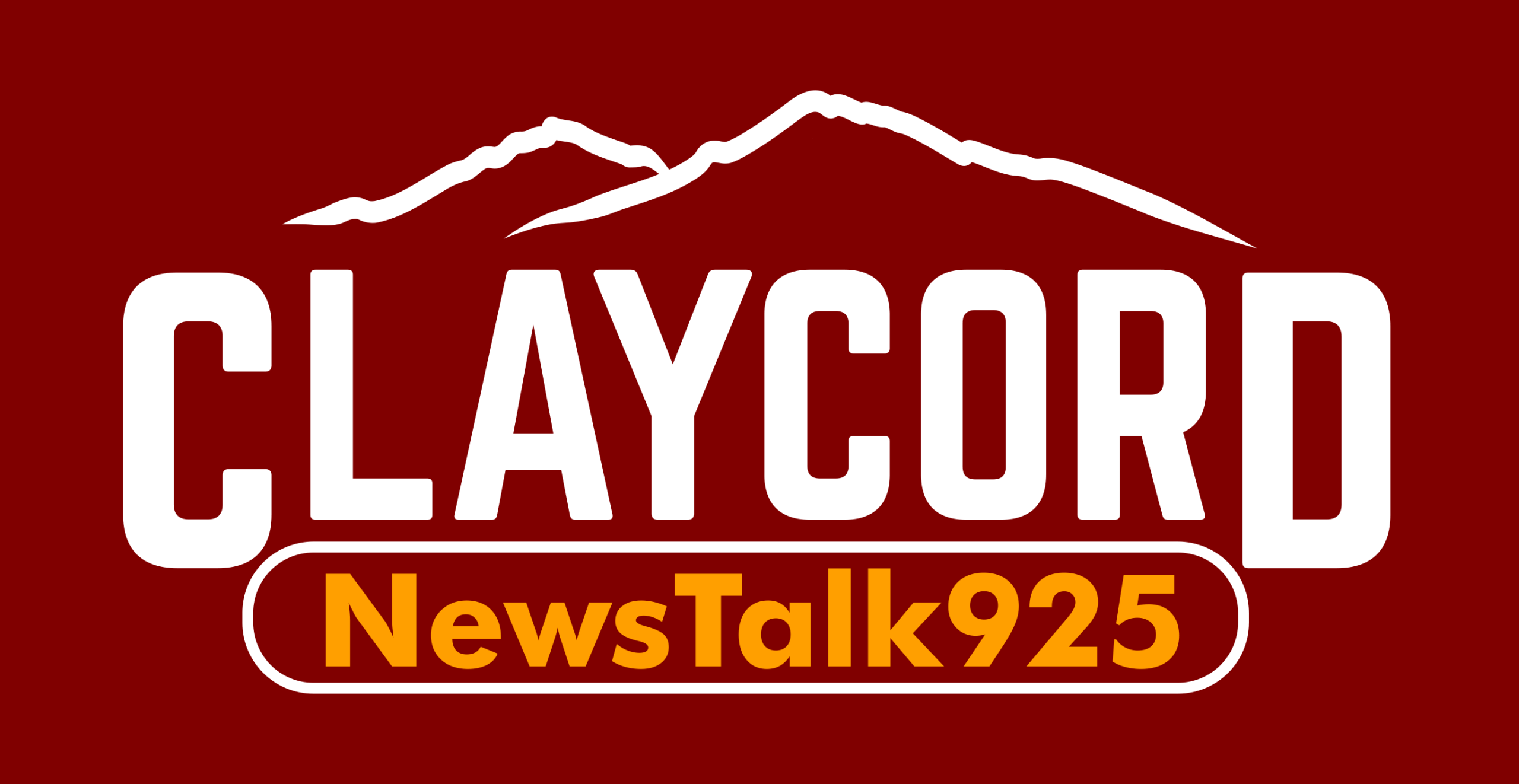
The “Water Cooler” is a feature on Claycord.com where we ask you a question or provide a topic, and you talk about it.
The “Water Cooler” will be up Monday-Friday at noon.
Today’s question:
QUESTION: Although they might, we all know PG&E shouldn’t conduct the public safety power shutoffs for the next 10, 20 or even 30 years, so if you were in charge of PG&E, what would your long-term plan be to fix things with the utility company?
Talk about it.


I think it would be in everyone’s best interest if PG&E stopped sucking the public dry with their rates and rate increases and used their profits (including those that have been accumulated over the years) to actually UPGRADE and ENSURE that the transmission lines and equipment are in good shape and not aging and ignored. If PG&E had been doing the right thing all along we wouldn’t be in this situation!
Reduce wages of all VP’s down to minimum wage. Cancel bonuses for everyone who does not actually do LABOR. If you sit at a desk, you don’t get a bonus.
Get safety requirements in place and FIX the problems you have created. This is something that should have been ongoing from day one and is your responsibility.
I would NOT make customers pay for PG&E’s F*CK-UPS.
Identify the areas with high winds, lots of combustible fuel and bury the lines wherever possible. If burying the winds isn’t possible, look at how every other power company in the country is able to provide power without blowing up neighborhoods and killing people.
👍
Break up PG&E to be municipality based but as a customer owned utility.
Also, would bury transmission lines.
Well of course Municipalities don’t burn down places……because they do not have transmission lines crossing through the Sierras.
Maybe, have the ability of Regional rather than National grid. Remove transmission lines from the mountains and bury them in the shoulder of the roads, yes…..it will take miles and miles of extra wire bit at least they’ll no longer need to worry about “high” winds.
First, start with CA policy regarding forest management, and allow property owners to clear cut areas around their property from dead and dying trees and brush. Then implement some of the other suggestions noted here.
Shoot the enviro-whackos/progressives who stood in the way of creating a clear space by the power lines and then clear the areas around and under the power lines. Perform regular inspections and maintenance of the power lines to minimize the chances of failure. Put the lines underground only where absolutely necessary. If the power lines do fail and there isn’t anything under them to catch fire then the only result is a temporary power outage.
1. Add free market competition!
2. Facilitate independent usage of the solar power plants that already exist on the roofs of many homes, businesses, schools and parking lots. Isn’t it absurdly ironic that in a power outage, people cannot use their own solar generated electricity from the power plant sitting on their own roof? No transmission line problem in the wind with that!
3. Invest in storage (efficient battery arrays – see Tesla)
4. Where transmission lines are still needed, bury them!
5. Reduce taxes and fees and redirect into competitive pricing.
Regarding #2, that is your responsibility and not the utility’s. If you want to be able to switch off the grid when you want, install the infrastructure to do so.
Re #2 – Check out Sunny Boy inverter equipment that provides 120v AC power from your solar panels when the grid is down but the sun is up.
It appears that hot, extra dry, hi-speed winds have become the norm at this time of year. Our Diablo winds now match the Santa Ana’s for fueling large brush/forest fires. It will require substantial investment to move more service lines underground, and clear away high voltage lines fuels. Not likely they have the money, as their stock closed today @ $ 5.03/share.
The state will probably take over generation and provide power to municipal or county agencies for local delivery. It will be more expensive as burying the lines would be prohibitive in rural areas, and clearing foliage won’t be cheap either.
I predict the state will get in the power business.They will ration power via smart meters and raise wholesale power pricing to new levels.
No good news ahead.
And if the state takes over the generation/transmission, I guess the people can all sue the state for the fires that THEIR lines cause.
And the municipalities that take over the distribution lines? I guess THEY can be sued for the fires that THEIR lines caused, also.
But not to worry…..California has the “5th largest economy.”
Bury the lines and bring back the cattle grazing.
If I ran PG&E, I would take a pay cut and cut all pay of executives. I would reach out to other utilities to research how they are hardening their lines and maintaining them.
But it’s too late. PG&E put maintenance as a low priority 20 years ago in order to save costs. Now they would have to pour millions in to maintenance just to catch up to where they should be…. instead of getting a return on their stock price for investors.
Make it mandatory if you live in a medium to high fire danger area bury all of the electrical lines. And buy a couple of goats to clear the area and keeps it cleared
IF maintenance practices were changed to save money, those who made such a decision, if it was made, deserve to be held criminally liable.
“KP” and “Clayden” posting is the answer. Ever since the protest and subsequent knuckling under by the Feds to agree with those “tree huggers”, the logging industry bailed from NCal. If these same liberal and progressive activist had not ham-strung (PG&E for example) these utilities with lawsuits and protest, all the trees that got arc’d would not have occurred had the utilities were able to do broad clearing from xmsn towers and HV lines.
PG&E is just deep pockets for the general population.
First: I couldn’t say it any better than Mimi did at #1. Second…I’ll go off topic and suggest that while we’re looking at how to clean up the profiteering of our power companies…we need to take a long hard look at the profit mongering taking place in the delivery of public water. Systems for delivery are aging, decaying, not being upgraded…but management and board members are living high off the hog. Why does it cost $49. to deliver $6 worth of water through 60yr old dirty, rusty pipes?
Thank you.
Any publicly held enterprise is only interested in putting money in their shareholders pockets. That is their first and only concern. I don’t know what the answer is, but I know the problem starts there.
First to No Excuses, yes add water delivery to mix. 3 or 4 consolidated organizations for the state.
PG&E should be split between gas and electric. Neither one should pay dividends unless there is a true profit AFTER all the things that should be taken care of actually are and completed. No bonus unless there is a true profit after ALL the things that should be taken care actually are. Might take a few years.
They need to bury the lines. Most of these problems are caused because they refused to spend the extra money to bury lines.
1. Forestry Management: Selective tree thinning and grassland abatement.
2. Fuel-free buffer zones btwn residential subdivisions and rural/agriculture lands. Vacant/unbuilt lots must also be weed abated and fuel-free.
3. Lots with swimming pools must have 200 GPA pump system to utilize it as a fire-fighting/suppression system. Bonus/rebate if it surrounds the home!
4. Power line rights-of-way: Clear-cutting like they do in the mid-west… the high-voltage line paths don’t have any trees.
5. Building Code modifications – Non-combustible roofs. Sprinklers for all new residences. Outbuildings must be fire-resistive
6A. Site planning… No tree can be taller than 25 feet tall when within 25 feet of a home or accessory building and trees cannot overhang roofs of any structure. Exemptions granted if building exteriors are fire-resistant – stucco, cement fiber, stone or masonry veneers.
6B. Subdivisions must have fire-break walls. No wood fences surrounding the development tract.
7. Mandatory preventative maintenance/inspection program for all above-ground power distribution systems. This means you PGE!
8. Participation assessments on residential subdivisions if the majority of property owners vote to underground their utilities.
.. that is all for now.
That’s the most sensical response yet.
The first person who finally put some REAL thought into this situation. Please let me add that, in a controlled environment, fire, is good for our forests. Our forests used to burn about every 10 years and this kept them healthy by eliminating invasive species of plants, and allowing the natural vegetation to flourish. This healthier forest is also less susceptible to the bark beetles that are killing our forests
Thanks.
I’m all about an “all of the above” approach. Each segment, from homeowners, land owners (ranchers/farmers), developers, utility companies, local, state, and fed govts, all have a part in addressing wildfire readiness.
PG&E is proving to be “inept”. With that being said, they will soon be “taken over” by the good State of California, which will then be called CG&E. PG&E CEOs will just work for CG&E as will all the worker bees.
No changes really.
Cucked Gas & Electric? Seems to fit well as they have always been at the beckoning call of the Government.
Temporarily suspend state mandates that require PG&E to buy renewable power, and use the substantial cost savings to accelerate the modernization of the power grid.
I lived in Florida for some years. Virtually all of the utility power lines there are underground. It makes sense there because pole mounted power lines don’t fare well in hurricanes, the common natural disaster threat there. Here underground power lines make less sense. Our natural disaster threat is earthquakes. Stuff like power lines, more specifically the conduits that carry those lines, tend to fail in earthquakes. Such failures are very costly and time consuming to repair because repair requires locating and excavating the point of failure. This takes time, and a lot of expense, and will prolong recovery after earthquakes.
A better solution, in my mind, is upgrading the grid to prevent arcing. National Electric Code for probably the last twenty years has required Arc Fault Circuit Interrupters in homes. If you’ve had a home built, or electrical upgrades to your home under a permit in the last decade or so, you have them in your house. AFCIs shut down power to a circuit if there is an arc. Arcing is what generally causes fires around utility lines.
I have a very high level of expertise as an electrician. That expertise does not apply to utility level systems. My understanding though is that AFCI technology is scalable to utility lines. It only takes the willingness of the utility to spend the money to apply that technology. Therein lies the root of the problem.
First off, Florida has a s#@%*ton of overhead lines. Just watch the news whenever there is a hurricane. Also, when a hurricane comes guess what they do? They shut off the power!
The utilities do have breakers, interrupters and fuses to protect the grid. However, unlike your house, the voltage is 100 times more on the power poles. So even with a breaker, there will be sparks when something gets into the lines.
Since PG&E is a private entity, although subject to public regulation and oversight, whomever is picked to lead it is going to have the same mindset as it’s past leaders. The only control an individual truly has is to protect themselves (in the short term) with a backup plan…a generator or batteries.
Underground utilities are great, but face it, you can’t afford for PG&E to bury all of them.
Our power bills would be more than our insane mortgages.
When a high voltage transmission conductor fails you get fourth state of matter, Plasma and an explosion. Above ground conductors can be replaced in hours, underground conductors can take days to weeks.
High voltage transmission conductors and associated equipment, IF properly installed and maintained can go many decades without a problem.
Examples of failures,
https://www.youtube.com/watch?v=nTWc45JRQGs
https://www.youtube.com/watch?v=gOT8jx4jEzM
For anyone who’s lived here since the early 60’s should know, PG&E, the PUC as well as most of the state politicians have had a rather cozy relationship over the years. Any time PG&E has asked for favors, usually in the form of rate hikes or some sort of regulatory variance, it has been given the preferential treatment that well-greased / funded campaign funds will get you. And for Newsome to eagerly wave his finger at PG&E to take all the blame rings hallow, being there is PLENTY of blame to be laid at the feet of our regulators and politicians for not properly regulating PG&E in the first place.
And that’s the truth.
There is a small problem with the suggestion that the stock and bond holders not be paid dividends until all maintenance and safety improvements are made. No one would invest in such a company.
Ok if that what it will take to get this POS company taking care of business it should have been taking care of – AND – amortizing over many decades – time for PG&E and shareholders to suck it up.
A large part of this problem circles back to the Environmental Extremists, forcing PG&E to fund or purchase Renewable energy sources! Likewise the prohibition of forrest thinning and adequate water storage resources!
Liberal California is still getting it wrong!
Cutting off their nose to spite their face!
Let’s be clear about PG&E.
They are an Investor Owned Utility that is on the Stock Market.
Their first duty is to maximizing shareholder wealth.
They have known for decades about this problem but decided to NOT invest in remedies, rather they did not spend the money needed in order to drive stock prices and multi-million dollar bonuses for their Executives.
Now they are shutting of power to large population centers because they can be held liable for fires that break out due to their equipment.
They don’t care about YOU, they care about the LIABILITY and losing money in the fallout from this multi-decade debacle that has been waiting to happen.
If you want to have what is essentially a Publically Traded Company run the power for the state – well – this is what you will always get.
I am a fan of Capitalism, however, I also know how it works – on the good and bad sides. Capitalism is great until it breaks and when it breaks it typically happens very quickly and impacts lots of people who have literally no recourse.
Having retired from the business, I would like to address a couple legitimate concerns, Investor Owned vs Publicly Owned, and Undergrounding.
1. The investors don’t make much return on their investment in PG&E. Few employees or retirees have much, if any PG&E stock. If someone thinks the stockholders are making it, they can easily buy some PG&E stock and learn the reality. PG&E was well run and up on maintenance until the mid 1980’s. Lawyers and bean counters replaced engineering oriented top executives getting Diabolical Canyon permitted.
As far as Publicly owned goes, take a look at our public infrastructure. Our roads, bridges, dams, BART, and buildings We see the same level of maintenance and constant requests for more taxpayer money.
2. Undergrounding- the cost to underground basic neighborhood distribution lines is around $500-$1,000 per foot. The cost to underground the customer’s service on their property and convert their meter panel is probably around $5,000. Customers often freak out at that tiny expense, not realizing the millions spent out in the street. Undergrounding transmission lines is a whole different matter. Costs go up exponentially. Maybe $20,000 per foot X thousands of miles. Also, new rights of way would be required on most of it and we know how eager land holders are to give more land rights. 30 years of litigation, easy. In the end, underground isn’t necessarily more reliable, and maintenance costs are much higher.
Finally, if the overhead maintenance was up to date, things wouldn’t be so dangerous. 35 years of neglect won’t be easy to correct. Qualified contractors generally don’t want to work for PG&E, or any other utility in the state because of cost of housing, schools and quality of life. So, PG&E has a tough time with manpower. From new employee to journeyman lineman is at least 5 years, or longer. Most of the young job seekers are not looking for hard work in uncomfortable outdoor conditions.